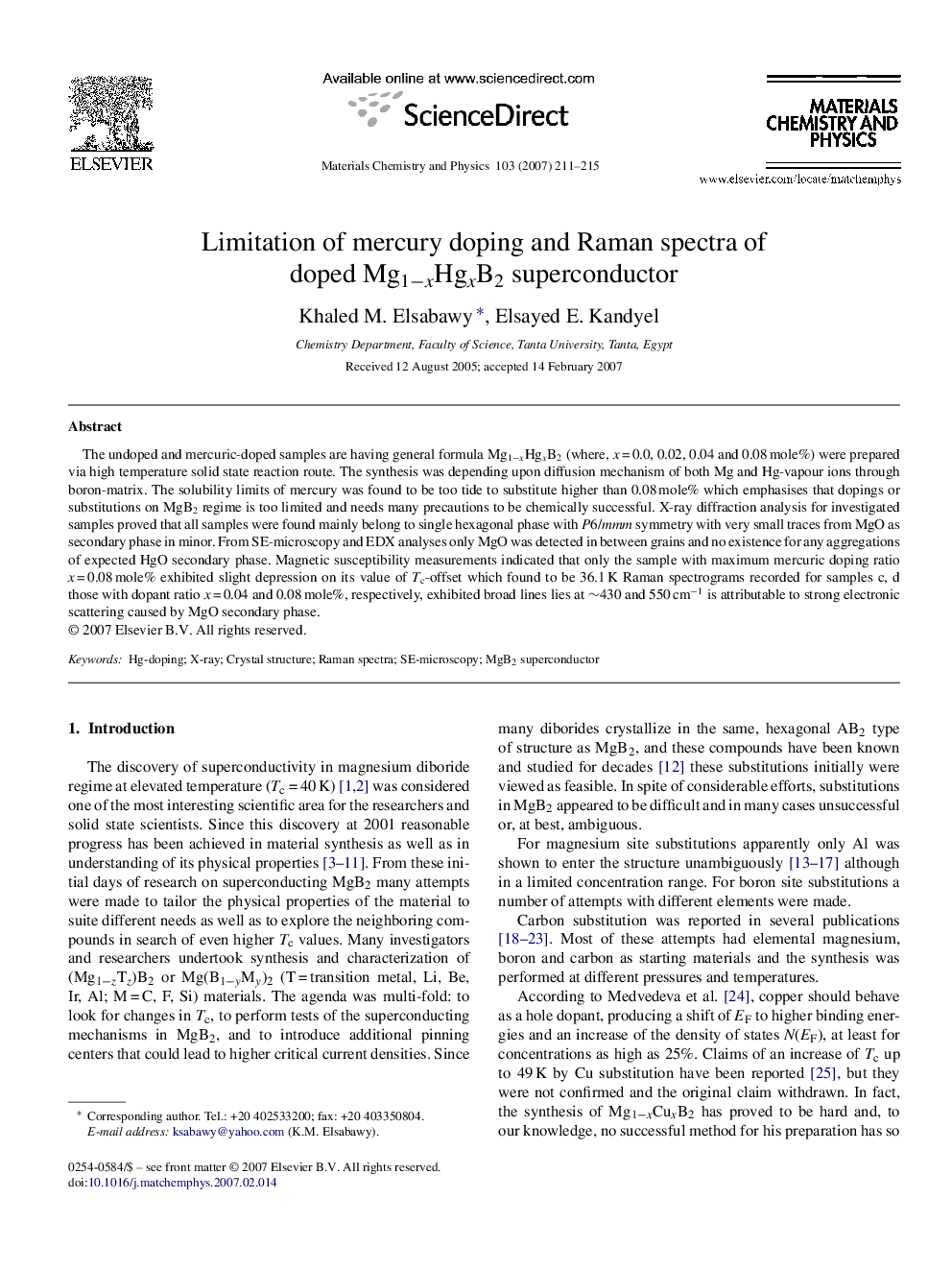| Article ID | Journal | Published Year | Pages | File Type |
|---|---|---|---|---|
| 1527316 | Materials Chemistry and Physics | 2007 | 5 Pages |
The undoped and mercuric-doped samples are having general formula Mg1−xHgxB2 (where, x = 0.0, 0.02, 0.04 and 0.08 mole%) were prepared via high temperature solid state reaction route. The synthesis was depending upon diffusion mechanism of both Mg and Hg-vapour ions through boron-matrix. The solubility limits of mercury was found to be too tide to substitute higher than 0.08 mole% which emphasises that dopings or substitutions on MgB2 regime is too limited and needs many precautions to be chemically successful. X-ray diffraction analysis for investigated samples proved that all samples were found mainly belong to single hexagonal phase with P6/mmm symmetry with very small traces from MgO as secondary phase in minor. From SE-microscopy and EDX analyses only MgO was detected in between grains and no existence for any aggregations of expected HgO secondary phase. Magnetic susceptibility measurements indicated that only the sample with maximum mercuric doping ratio x = 0.08 mole% exhibited slight depression on its value of Tc-offset which found to be 36.1 K Raman spectrograms recorded for samples c, d those with dopant ratio x = 0.04 and 0.08 mole%, respectively, exhibited broad lines lies at ∼430 and 550 cm−1 is attributable to strong electronic scattering caused by MgO secondary phase.
